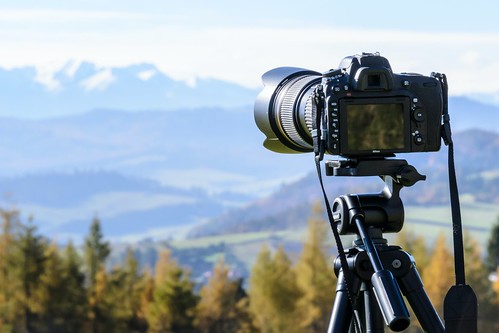Photography is not just a form of art; it's a way of seeing the world. It's an expression, a documentation, a story-telling medium that is as diverse as the individuals who wield the camera. From the spontaneous snaps of street photography to the meticulous compositions of landscape shots, each type of photography offers a unique perspective and requires different skills.

Photo by Jamie Street
This article will explore various types of photography and offer guidance on choosing the one that resonates most with your personality and interests.
Introduction to Photography’s Diverse Realm
Photography, at its core, is about capturing moments in time. However, the way these moments are captured varies immensely. Each type of photography not only demands different technical skills and equipment but also a different eye for detail and storytelling. Understanding these differences is key to finding your niche in the vast and colorful world of photography.
The Many Faces of Photography
Portrait Photography: Capturing the Essence of Individuals
Portrait photography is all about capturing the personality, mood, and essence of a person. This genre requires the photographer to connect with the subject, making them feel comfortable and expressive. It's ideal for those who enjoy interacting with people and have a knack for bringing out the best in their subjects.
Landscape Photography: Painting with Light and Nature
Landscape photography is for those who are in awe of nature and love exploring the great outdoors. This genre involves capturing natural scenes, from rolling hills to urban skylines. It requires patience, a keen eye for composition, and often, the willingness to wait for the perfect light.
Street Photography: The Unscripted Chronicle
Street photography is spontaneous and unpredictable. It involves capturing candid moments and the everyday life of people in urban settings. This genre is perfect for those who enjoy observing and documenting human interaction and the bustle of city life.

Photo Masashi Wakui
Wildlife Photography: The Thrill of the Natural World
Wildlife photography takes you into the animal kingdom. It requires patience, a deep respect for nature, and often a significant investment in equipment. This genre is ideal for those who love animals and are passionate about conservation.
Sports Photography: Capturing Action and Emotion
Sports photography is all about capturing the energy, motion, and emotions of sporting events. This genre requires fast reflexes, a good understanding of the sport, and the ability to anticipate action.
Architectural Photography: Celebrating Design and Form
Architectural photography involves capturing buildings, structures, and interiors in aesthetically pleasing ways. It appeals to those with an interest in design and architecture, requiring a good eye for symmetry, patterns, and composition.
How to Choose the Right Type of Photography for You
Assessing Your Interests and Passions
The first step in choosing the right type of photography is to assess your interests. Are you a nature lover, a sports enthusiast, or a people person? Your passions will guide your choice.
Considering the Learning Curve and Equipment
Each genre of photography comes with its own learning curve and equipment requirements. For instance, wildlife photography often requires long lenses and a higher degree of patience, while portrait photography demands an understanding of lighting and how to work with people.
Experimentation and Practice
The best way to find your niche is through experimentation. Try different types of photography, attend workshops, and practice as much as possible. Over time, you will naturally gravitate towards the genre that excites you the most.
Iit's essential to understand that each type of photography not only demands different skills but also specific equipment. The right tools can make a significant difference in capturing the essence of your chosen subject.
Here’s a look into the different types of equipment needed for each photography niche:
Tailoring Your Gear to Your Photography Niche
Equipment for Portrait Photography
In portrait photography, the goal is to capture the personality and emotion of the subject. Essential equipment includes:
• Camera: A DSLR or mirrorless camera with a high-resolution sensor is ideal.
• Lenses: Prime lenses (like an 85mm or 50mm) with wide apertures (f/1.4, f/1.8) are preferred for their ability to create a shallow depth of field and beautiful bokeh.
• Lighting: Good lighting is key. Softboxes, reflectors, and sometimes flash units are used to control shadows and highlights.
• Backgrounds: Various backdrops can set the mood or theme of the portrait.
Gear for Landscape Photography
Landscape photography requires capturing vast scenes with clarity and depth.
• Camera: A camera with a high dynamic range and good ISO performance is preferred.
• Lenses: Wide-angle lenses (like a 16-35mm) are typically used to capture expansive scenes. A good telephoto lens can also be beneficial for isolating distant details.
• Tripod: Essential for stability, especially in low light conditions or for long exposures.
• Filters: Neutral density and polarizing filters can help manage light and color.

Photo by PhotoMIX Company
Street Photography Equipment
Street photography is about capturing life as it unfolds, requiring mobility and discretion.
• Camera: Compact cameras or mirrorless systems are preferred for their portability and less intrusive nature.
• Lenses: A standard zoom lens or a prime lens around 35mm is ideal for versatility.
• Additional Gear: Minimal. Sometimes, a simple flash unit or a monopod can be helpful.
Wildlife Photography Tools
Wildlife photography often involves shooting subjects from a distance in their natural habitat.
• Camera: A camera with fast autofocus and high frame rate is ideal.
• Lenses: Telephoto lenses (200mm to 600mm) are essential for capturing distant subjects.
• Support: A sturdy tripod or monopod is necessary for stability, especially with long lenses.
• Camouflage: Camouflage gear or hides can be used to conceal the photographer from wildlife.
Sports Photography Kit
Capturing fast action in sports photography requires specific gear to freeze motion.
• Camera: A camera with fast autofocus, high ISO performance, and a high frame rate.
• Lenses: Telephoto zoom lenses (70-200mm, 100-400mm) are commonly used to capture action from a distance.
• Monopod: Helps in managing heavy lenses during fast-paced events.
Architectural Photography Equipment
Architectural photography focuses on capturing buildings and structures.
• Camera: A high-resolution camera with good dynamic range.
• Lenses: Wide-angle lenses are essential. Tilt-shift lenses can be beneficial for correcting perspective distortions.
• Tripod: For stability and precision framing.
• Additional Gear: Sometimes a drone can be used for aerial shots of structures.
Investing in the Right Equipment
Balancing Budget and Quality
While it's tempting to purchase top-of-the-line gear, it's important to balance your budget with the quality of equipment. Start with essential items and gradually build your kit as you develop in your chosen niche.
DJI Mini 4 Drone: Expanding Your Horizons
The DJI Mini 4 drone is a remarkable addition to the toolkit of any photographer looking to explore aerial photography. As a lightweight and compact drone, it is incredibly user-friendly, making it accessible even to those new to drone photography.
Understanding the Role of Post-Processing
No matter the genre, post-processing software like Adobe Lightroom or Photoshop is crucial in the digital age. These tools help enhance your photos, correct errors, and bring your artistic vision to life.
Photography, while a passion for many, can also become a lucrative career or a side income stream. Here’s how you can turn your photography skills into revenue.
Transforming Photography into a Profitable Venture
Selling Prints and Stock Photos
One of the most traditional ways of making money through photography is by selling prints. Photographers can sell prints of their best works either online through their website or at art shows and galleries. Additionally, stock photography is a viable option. Websites like Shutterstock, Adobe Stock, and Getty Images allow photographers to upload their images and earn royalties when they are purchased or downloaded.
Freelance Photography Assignments
Freelance photography is a broad field encompassing various niches. Photographers can specialize in areas like weddings, events, portraits, or corporate photography. Building a strong portfolio and networking are key to gaining clients. Freelancers can also use platforms like Upwork or Fiverr to find potential gigs.
Working with Publications
Many photographers find opportunities by working with magazines, newspapers, and online publications. This can include travel photography, photojournalism, or contributing to feature articles. Establishing connections with editors and understanding the publication’s aesthetic can lead to regular assignments.

Photo by Andre Furtado
Commercial and Advertising Photography
Commercial photography is another lucrative field. This involves shooting images for commercial use, such as in advertisements, merchandising, and product placement. Success in this niche often requires an understanding of marketing and the ability to create visually appealing images that align with brand messaging.
Teaching Photography
If you have a knack for teaching, conducting photography workshops or courses can be profitable. This can be done either in-person or online through platforms like Udemy or Skillshare. Teaching requires not just photography skills but also the ability to communicate and instruct effectively.
Photography Tours and Workshops
For those who love travel and photography, organizing and leading photography tours or workshops can be a unique way to earn income. This involves planning trips to picturesque locations and guiding participants on capturing the best shots, offering tips and insights along the way.
Social Media Influencing and Blogging
In the digital age, photographers can also leverage social media platforms like Instagram, YouTube, or a personal blog to build a following. Monetization can come through sponsorships, brand collaborations, or affiliate marketing. This path requires consistent content creation and audience engagement.
Licensing and Syndication
Experienced photographers can license their work for use in books, magazines, TV, and online platforms. This often involves negotiating usage rights and fees. Syndication through agencies can also be a way to sell your photos to a broader market.
Photography Contests and Grants
Participating in photography contests and applying for grants can not only bring recognition but also monetary rewards. Winning prestigious contests or receiving grants can also open doors to further opportunities and exposure.
Embrace Your Unique Perspective
Photography is a personal journey. It's about how you see the world and how you choose to express that vision. By exploring different types of photography and understanding your own interests and skills, you can find a photographic style that not only excites you but also allows you to communicate your unique perspective to others. Remember, the best type of photography for you is the one that resonates with your heart and ignites your passion for capturing the world around you.
